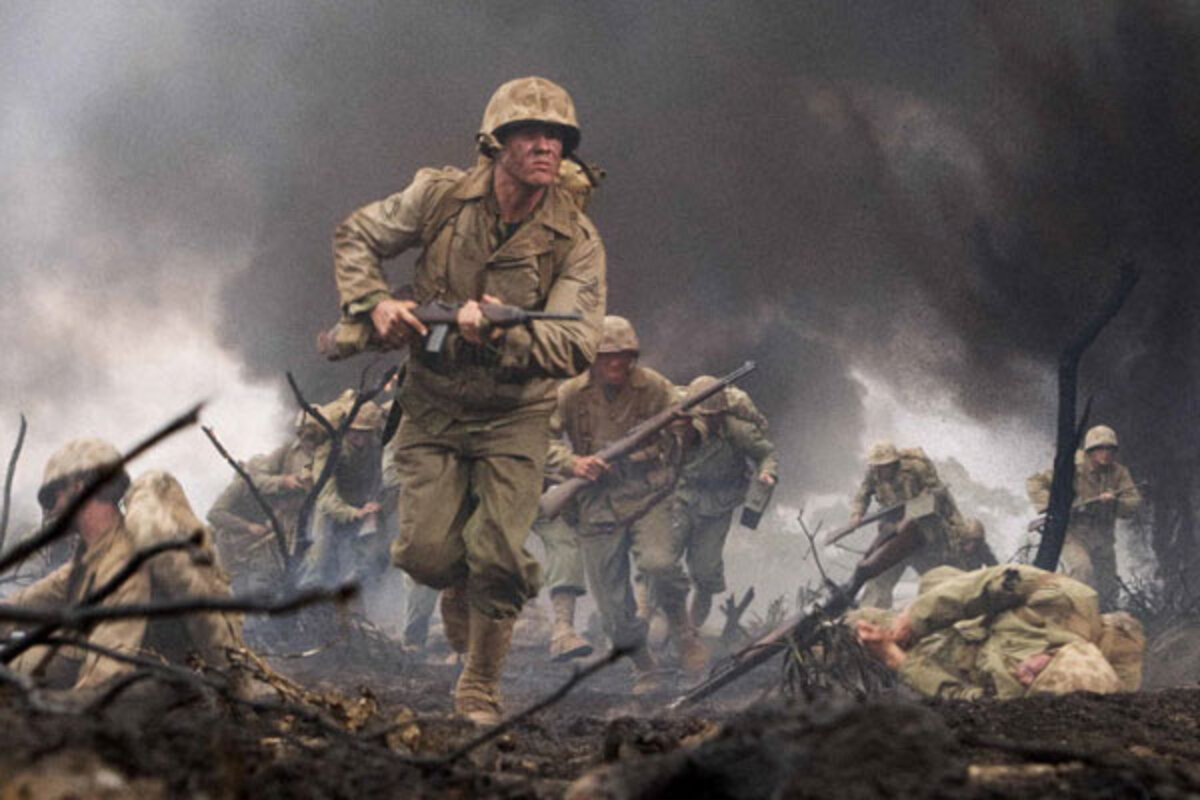Hanks and Spielberg see in 'The Pacific' a harbinger of today's wars
Loading...
| Pasadena, Calif.
Tom Hanks' and Steven Spielberg’s latest passion project – “The Pacific,” a 10-part HBO drama about World War II across “the other ocean” – is their third joint effort about the Allied-Axis showdown, but that doesn't mean they embrace war. Rather, the dynamic duo of the 21st-century war genre has developed an abiding commitment to bringing history's lessons to modern audiences, especially those lessons that resonate with today's war-weary Americans, says Mr. Hanks.
The Hanks-Spielberg pairing has already yielded the film “Saving Private Ryan” and the HBO mini-series “Band of Brothers,” both stylistically groundbreaking collaborations about World War II. "The Pacific," which launches on HBO Sunday at 9 p.m., looks to be an undertaking of equally epic proportions.
The story follows three young American marines who fight and survive battles on tiny islands with unfamiliar names against an enemy with whom they share no cultural references, says Hanks, who with Mr. Spielberg and main cast members spoke in January to television critics at an event in Pasadena, Calif.
In some ways, this prefigures the wars in Vietnam, Iraq, and Afghanistan.
“The European war at World War II was the last war of its kind in which great armies fought and decided when they began and when they did not,” says actor Hanks, whose role in "The Pacific" is solely that of executive producer. “In Europe, an enemy soldier could throw up his hands; his war would be over. The war in the Pacific was more like the wars we’ve seen ever since – a war of racism and terror, a war of absolute horrors, both on the battlefield and in the regular living conditions.”
The series aims not only to illustrate the brutality of the battles, but also to take the audience through the experience – and back.
“What moved us to tell these stories based on these survivors, these veterans," says Spielberg, "was to see what happens to the human soul throughout this particular engagement.” The kind of war for which Americans were trained to fight wasn’t what they encountered as they skirmished in the backwaters of tropical lagoons. “We weren’t trained by the drill instructors stateside,” Spielberg adds. “We were trained by the enemy, how to fight the enemy.”
Says Hanks, “the challenges that we put forward to ourself at the beginning of all of this was to take human beings and put them through hell and wonder how in the world they would approach the world when they came back.”
Because the campaign in the Pacific unfolded mainly on tiny islands in obscure latitudes, the filmmakers took care to pinpoint the war for the audience, both geographically and psychically, says Hanks. Each episode opens with a mini-history lesson before the action begins. The producers felt “it would be hard to get people excited about a battle over a place like Guadalcanal or Peleliu without some context, some historical context, to why our soldiers are fighting" there, says Hanks.
The narrative draws on personal memoirs of service members as well as historical records. While the brutality of war is much in evidence during the show's careful recreations of actual experiences, the team hopes viewers' understanding of heroism and sacrifice will be expanded.
“This [show] is to be the voice for so many men,” says Jon Seda, who portrays one of the trio of young soldiers.
At the same time, say the producers, "The Pacific" is not meant to be merely educational. The aim is to take the stories of these particular 17-year-olds and relay them in such a way that people can recognize themselves.
“We haven’t done a very great job if you look at this only as a museum piece, for the way that people acted and thought back then," says Hanks. "We’ve done a much better job if, when you see it, you’ll ask yourself, 'I don’t know what I would have done in that same circumstance. I recognize that fear in that person’s face. I can see how there’s correlations between the choices that those 17-year-olds made then and what 17-year-olds are making today.' "
He adds: “That’s the reason I think we tell every story. It just so happens that we have examined this great, great canvas of World War II, this great, great, rich period of our history time and time again. But we do it, I think, because we keep seeing ourselves and the current human condition reflected back in us from those stories.”




